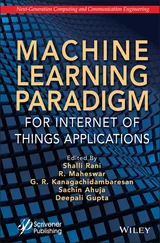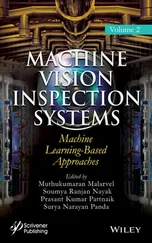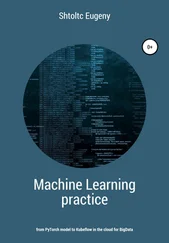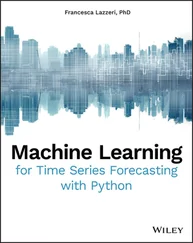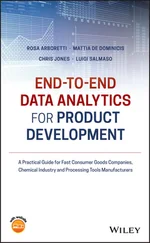23. Sethi, A., Supervised Learning vs. Unsupervised Learning, 2020. https://www.analyticsvidhya.com/blog/2020/04/supervised-learning-unsupervised-learning/.
24. https://www.javatpoint.com/difference-between-supervised-and-unsupervised-learning
25. Perlman, A., The Growing Role of Machine Learning in Cybersecurity, June 18, 2019.
26. Katz, H., IoT Cybersecurity Challenges and Solutions, 2019.
27. https://www.cloudflare.com/learning/ddos/what-is-a-ddos-attack/
1 *Corresponding author: suchismita.sahoo86@gmail.com
3
Employing Machine Learning Approaches for Predictive Data Analytics in Retail Industry
Rakhi Akhare*, Sanjivani Deokar, Monika Mangla and Hardik Deshmukh
CSED, Lokmanya Tilak College of Engineering, Navi Mumbai, India
Abstract
The retail industry is experiencing a drastic transformation during the past few decades. The technological revolution has further revolutionized the face of the retail industry. As a result, each industry is aiming to obtain a better understanding of its customers in order to formulate business strategies. Formulation of efficient business strategies enables an organization to lure maximum customers and thus obtain a largest portion of market share. In this chapter, authors aim to provide the importance of predictive data analytics in the retail industry. Various approaches for predictive data analytics have been briefly introduced to maintain completeness of the chapter. Finally, authors discuss the employment of machine learning (ML) approaches for predictive data analytics in the retail industry. Various models and techniques have also been presented with pros and cons of each. Authors also present some promising use cases of utilizing ML in retail industry. Finally, authors propose a framework that aims to address the limitations of the existing system. The proposed model attempts to outperform traditional methods of predictive data analytics.
Keywords:Predictive data analytics, retail industry, machine learning, e-business
In this modern world, it is observed that the face of each business is experiencing a drastic transformation owing to huge technological advancements. Also, this technological revolution has influenced the mode of operation of the retail industry due to the change in the shopping behavior of customers. As a result, customers have shifted from conventional in-store shopping to shopping through online platforms, mobile channels, or even through machine-to-machine (M2M) commerce during the past few decades. The prime technologies which have propelled this business transformation are recent emergence in artificial intelligence (AI), big data, blockchain technologies, and the Internet of Things (IoT) [1, 2]. For instance, big business groups like Amazon and Flipkart have established a cut-throat competition to lure customers in the retail industry employing advancements in data analytics. Retail organizations have also been formulating different business and marketing strategies to garner the largest share of customers. Retail industries have been employing data analytics capabilities to better understand their customers in terms of choice, budget, and demand, which enables them to provide efficient and dynamic customer service. The retail industries obtain this competence of providing dynamic and user-specific service by gaining detailed information about purchase, location, and social media data of its customers. Here, social media data refers to the opinions and feedback about a product, service, or organization posted by customers, helpful to other prospective customers to make an informed purchase decision. Handling such huge data consisting of purchase, location, and social media is achievable as a result of advancements in big data technology [3, 4].
Big data is an efficient technology to handle complex, unstructured, varying, and voluminous data in comparison to traditional data-processing technologies. Basically, big data is characterized by four V’s, viz ., velocity, volume, variety, and veracity. Big data facilitates efficient analysis of such complex data to reveal patterns, associations, and hidden patterns. Advancement in the big data has enhanced its employment in the retail industry as it significantly aids them to frame future policies and business strategies [3]. The process of discovering meaningful and useful information in big data is referred to as big data analytics (BDA). BDA enables industries to collect and process the big data to discover insights for factbased and informed decision-making [5]. BDA has proved its potential and capability in diverse domains including retail industry. In the retail industry, BDA aims to deliver an enhanced shopping experience through recommendations, optimized operational system, and improved supply chain management (through demand forecasting). BDA can be broadly classified into three categories as shown in Figure 3.1.
Here, descriptive analytics is used to obtain summarized sales along various (region, product, etc.) dimensions [6]. Prescriptive analytics enables retailers to devise best strategies like market price in order to maximize business performance. Predictive analytics uses the historical data from past years to create empirical predictions [7]. There is sufficient number of techniques and technologies in existence to perform BDA. Some of the prominent technologies are data mining, optimization method, and machine learning (ML) [8]. The authors in this chapter primarily focus on the ML approaches employed for predictive data analytics in the retail industry. The chapter is organized as follows.

Figure 3.1 Classification of big data analytics.
Section 3.1of the chapter briefly introduces the concept of predictive data analytics and its requirements in the retail industry. Various approaches of predictive data analytics have also been mentioned in this section. Background and related work has been elaborated in Section 3.2. The predictive data analytics in the retail industry has been discussed in Section 3.3. It also presents various models for predictive data analytics using ML. Associated challenges and use cases have also been discussed in this section. Authors attempt to propose a framework for predictive data analytics in Section 3.4. Finally, conclusion and future direction for research has been presented in Section 3.5.
This section presents the background and related work of ML in the context of retail industries. The employment of ML in retail industries has started since its inception [9]. However, the emergence in ML has further boosted its employment in this domain during the past decade. The major employment of ML approaches is for prediction of sales, revenue and stock requirement in the retail industry. Authors in [4] established that the predictive model is generally suitable for estimating and predicting future observations and assessing their predictability levels.
Authors in [10] determined the possibilities of integrating big data in the retail industry. Authors discussed the usage of Bayesian approach and predictive analytics in the context of the retail industry. Authors also mentioned the concern for data privacy in retail industry. This research was taken one step ahead by authors in [11] who have used different ML techniques to predict the sales. In [11], it is observed that the normal regression techniques when integrated with boosting techniques have observed better results in comparison to mere regression algorithms. Using the same principle, authors in [12] also used ML approaches to predict future sales using the historical sales data. Authors discussed various approaches for the sales prediction and finally concluded that gradient boost algorithm is the best fit model for this scenario as it achieves highest accuracy and efficiency. The authors in [13] also implemented a stacking approach for regression ensemble to further improve prediction for sales. Authors in [14] proposed a model using ML techniques to optimize pricing on a daily basis. All these predictive models can be employed to predict demand and sales of products in future. Authors in [15] presented a regression model using regression trees for each department to predict future demand. The proposed model is authenticated in terms of its efficiency using least squares regression, principal components regression, and other similar regressions. Similarly, authors in [15] used historical data and Rue La La’s expertise for building size curves for each product p which represents the percentage of product demand for each size of p. Here, authors also attempted a price optimization problem with an object to set a prime for each product so as to maximize the revenue.
Читать дальше




